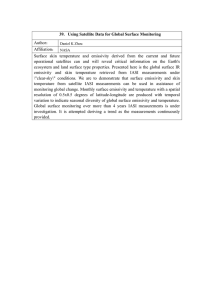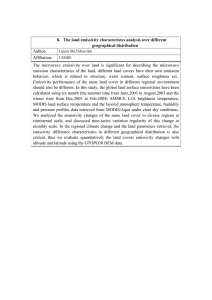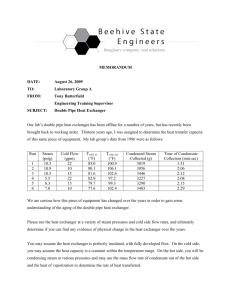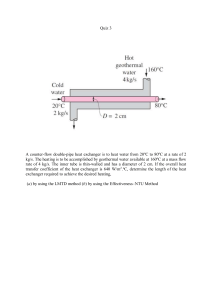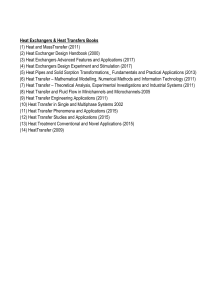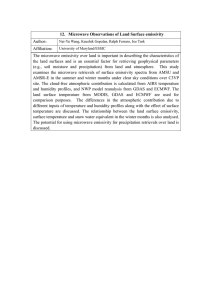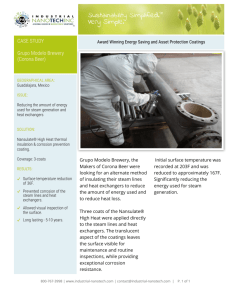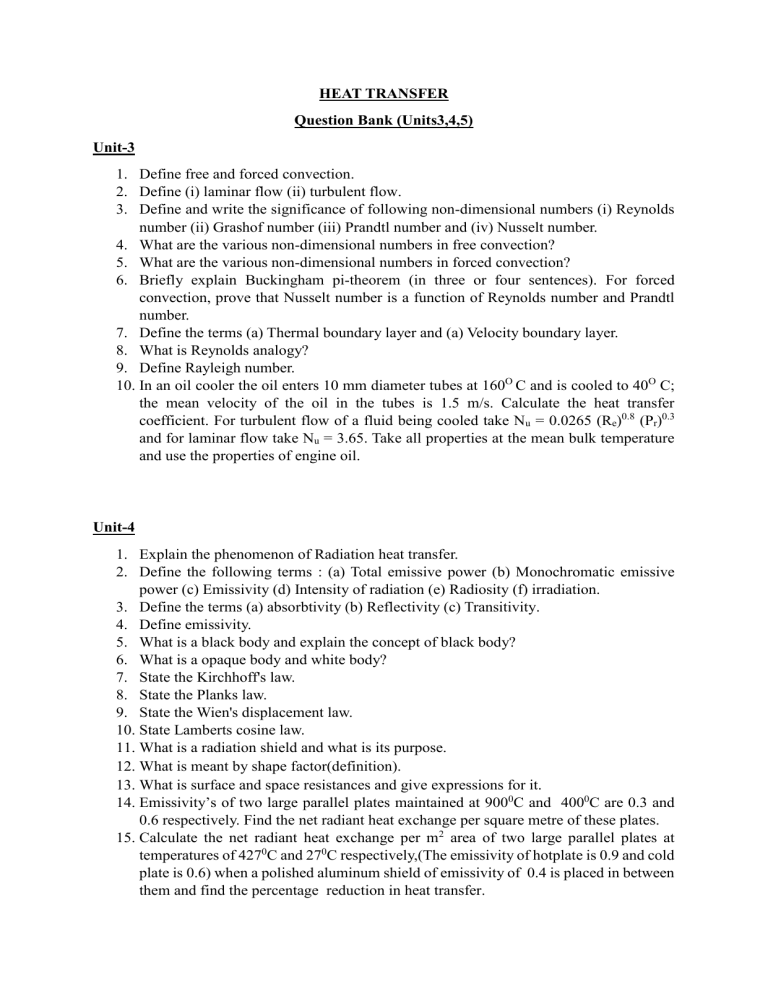
HEAT TRANSFER Question Bank (Units3,4,5) Unit-3 1. Define free and forced convection. 2. Define (i) laminar flow (ii) turbulent flow. 3. Define and write the significance of following non-dimensional numbers (i) Reynolds number (ii) Grashof number (iii) Prandtl number and (iv) Nusselt number. 4. What are the various non-dimensional numbers in free convection? 5. What are the various non-dimensional numbers in forced convection? 6. Briefly explain Buckingham pi-theorem (in three or four sentences). For forced convection, prove that Nusselt number is a function of Reynolds number and Prandtl number. 7. Define the terms (a) Thermal boundary layer and (a) Velocity boundary layer. 8. What is Reynolds analogy? 9. Define Rayleigh number. 10. In an oil cooler the oil enters 10 mm diameter tubes at 160O C and is cooled to 40O C; the mean velocity of the oil in the tubes is 1.5 m/s. Calculate the heat transfer coefficient. For turbulent flow of a fluid being cooled take Nu = 0.0265 (Re)0.8 (Pr)0.3 and for laminar flow take Nu = 3.65. Take all properties at the mean bulk temperature and use the properties of engine oil. Unit-4 1. Explain the phenomenon of Radiation heat transfer. 2. Define the following terms : (a) Total emissive power (b) Monochromatic emissive power (c) Emissivity (d) Intensity of radiation (e) Radiosity (f) irradiation. 3. Define the terms (a) absorbtivity (b) Reflectivity (c) Transitivity. 4. Define emissivity. 5. What is a black body and explain the concept of black body? 6. What is a opaque body and white body? 7. State the Kirchhoff's law. 8. State the Planks law. 9. State the Wien's displacement law. 10. State Lamberts cosine law. 11. What is a radiation shield and what is its purpose. 12. What is meant by shape factor(definition). 13. What is surface and space resistances and give expressions for it. 14. Emissivity’s of two large parallel plates maintained at 9000C and 4000C are 0.3 and 0.6 respectively. Find the net radiant heat exchange per square metre of these plates. 15. Calculate the net radiant heat exchange per m2 area of two large parallel plates at temperatures of 4270C and 270C respectively,(The emissivity of hotplate is 0.9 and cold plate is 0.6) when a polished aluminum shield of emissivity of 0.4 is placed in between them and find the percentage reduction in heat transfer. 16. Two very large parallel plates with emissivities 0.3 and 0.8 exchange heat. Find the percentage reduction in heat transfer when a polished aluminium radiation shield of emissivity 0.04 is placed between them. Unit-5 1. Give the classification of heat exchangers. 2. What is LMTD? Explain its significance. 3. Define NTU. 4. Define the terms Effective ness and Capacity ratio in case of heat exchangers. 5. What do you mean by fouling in heat exchangers. 6. Define the terms (a) Boiling and (b) Condensation 7. Draw and explain pool boiling curve. 8. Define critical heat flux. 9. Explain film wise and drop wise condensation. 10. A heat exchanger is required to cool 55,000 kg/hr of alcohol from 66O C and 40O C using 40,000 kg/h of water entering at 5O C. Calculate the surface area required for (a) parallel flow mode and (b) counter flow mode. Take U= 580 W/m2K, Cp for water = 4180 J/kg K and Cp for alcohol = 3760 J/kg K. 11. A vertical square plate 30 by 30 cm is exposed to steam at atmospheric. The plate temperature is 980C. Calculate the heat transfer and the mass of the steam condensed per hour. Neglect density of vapour. [Properties at film temperature of (100+98)/2 = 99 0C are: ρl =960 kg/m3; µ= 2.84 x 10-4 kg/m-s; k= 0.68 w/m0c. Take hfg= 2255 kj/kg for steam at atmospheric pressure]. 12. Exhaust gases (cp = 1.12 kJ/kgK) flowing through a tubular heat exchanger at the rate of 1200 kg/hr are cooled from 4000C to 1200C. The cooling is affected by water (cp = 4.18 kJ/kg 0C) that enters the system at 100C at the rate of 1500 kg/hr. If the overall HTC is 500 kJ/m2-hr, what Heat exchanger area is required to handle the load for (i) parallel flow (ii) counter flow arrangement. 13. Saturated steam at 1200C is condensing on the outer tube surface of a single pass heat exchanger. The HTC is U0 = 1800 W/m2K. Determine the surface area of a heat exchanger capable of heating 1000 kg/hr of water from 200C to 900C. Also compute the rate of condensation of steam. (hfg = 2200 kJ/kg).

